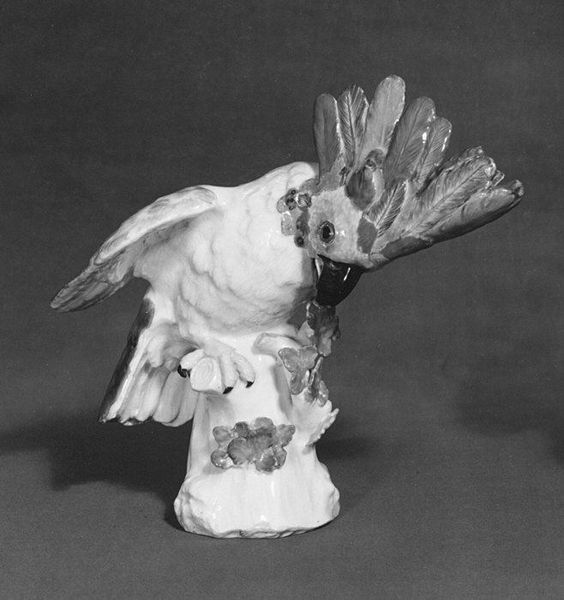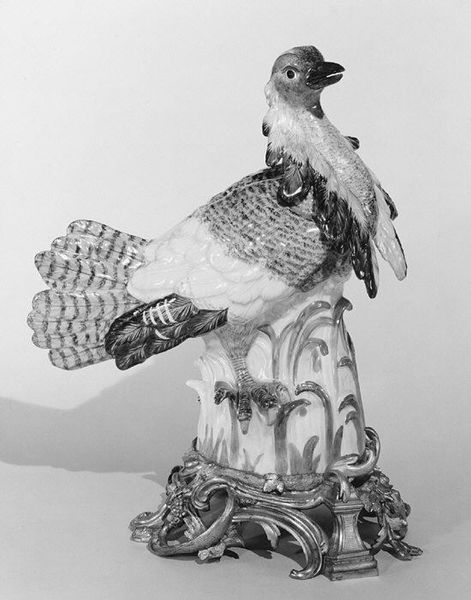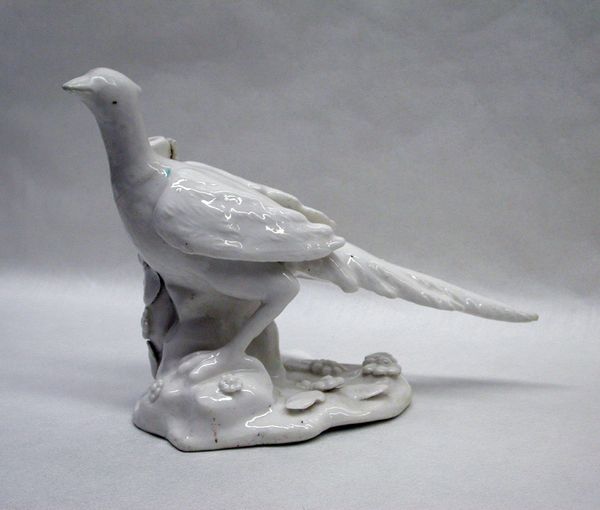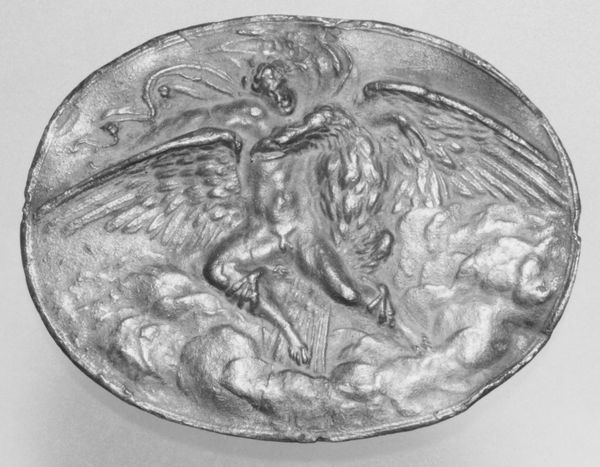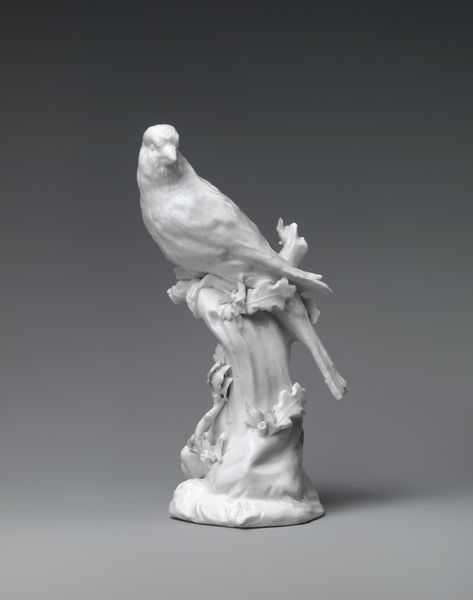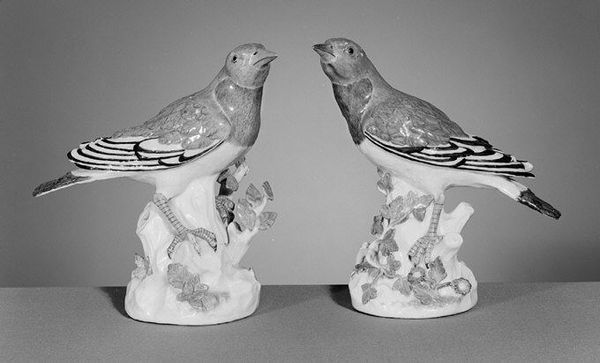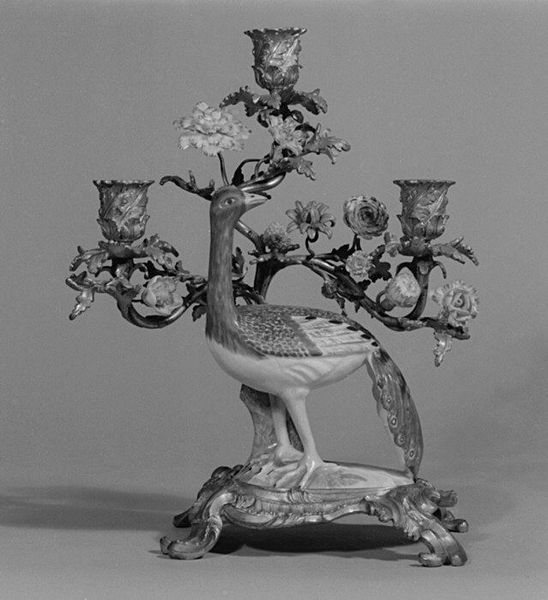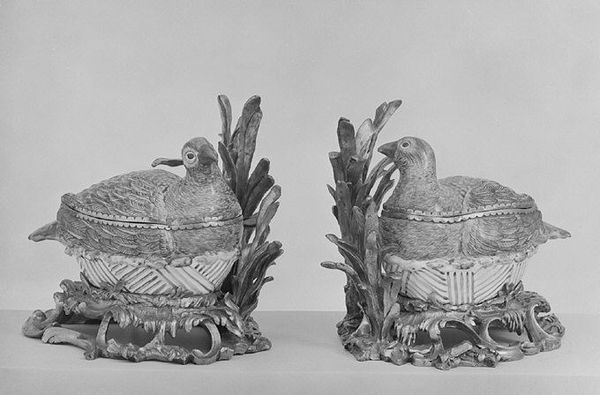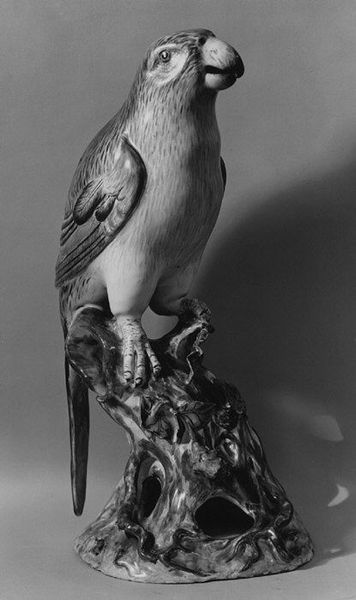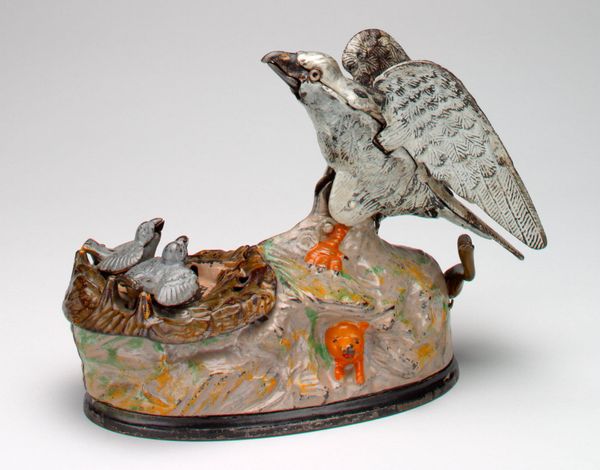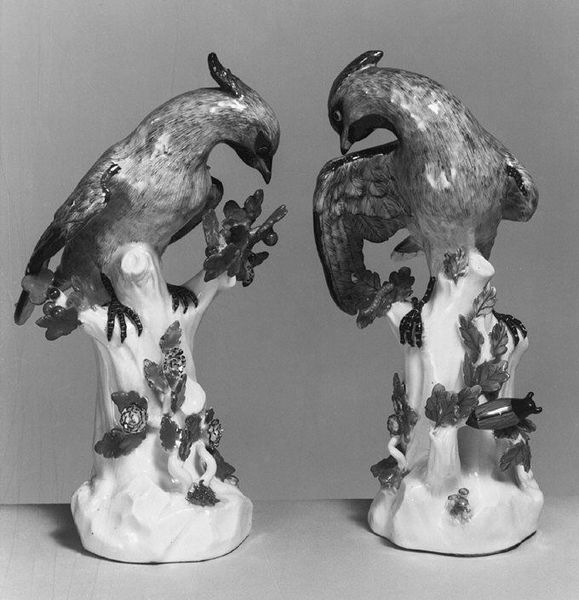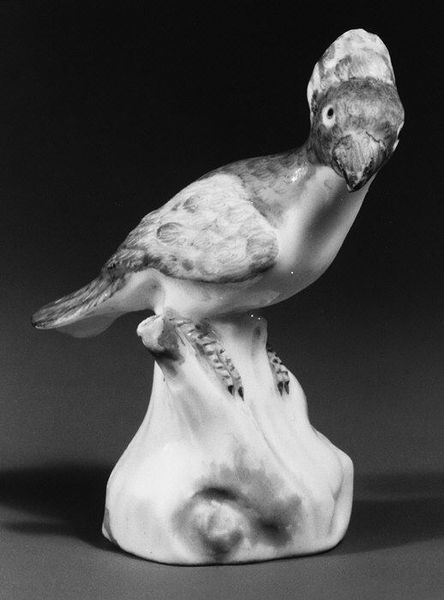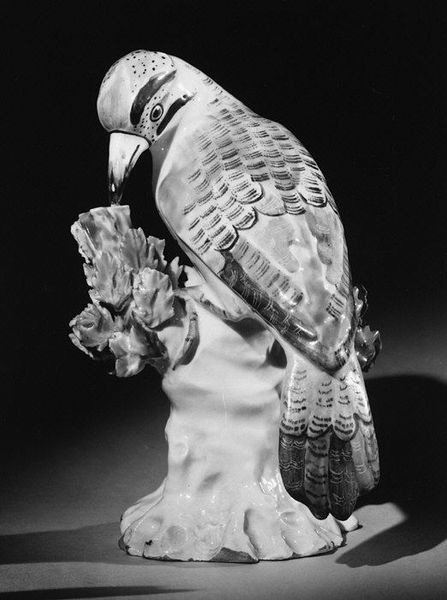
ceramic, sculpture
#
sculpture
#
ceramic
#
figuration
#
sculpture
#
decorative-art
#
rococo
Dimensions: Height: 6 3/4 in. (17.1 cm)
Copyright: Public Domain
Curator: So, here we have “Parrot with spread wings,” a ceramic sculpture by Johannes Zeschinger, crafted between 1750 and 1755. What strikes you about it? Editor: Immediately, the textural contrast is compelling. The smooth glaze of the parrot juxtaposed against the woven basket – it’s all artifice, of course, but delightful in its mimicry of natural materials. Curator: Indeed. The Rococo period adored such whimsical creations, often laden with symbolism. Consider the parrot itself. Historically, parrots have been associated with imitation, even mimicry of speech. Do you think that commentary could resonate in court society? Editor: Perhaps, but let’s not overlook the material. This isn’t just any clay. This porcelain production implies significant resources, specialized labor, the economics of 18th century workshops. Were these birds meant for the homes of nobility? How accessible would ceramic parrots have been? Curator: Certainly, the object reflects power dynamics, the exclusivity of such artistry. But I also wonder about the parrot as a stand-in for colonized peoples—a beautiful "discovery," displayed and contained. And that it sits upon a kind of crafted cage. Does the work intend to portray any ideas regarding exploitation or even enslavement? Editor: Interesting angle, thinking about colonial narratives. What about the artisan's role? Were they pawns or creative agents, shaping not just material, but meaning too? Can we explore the socioeconomic status and cultural standing of artisans working in porcelain? Curator: Precisely. These conversations regarding identity and oppression are important because they highlight the lasting power of objects. What dialogues do we open for our contemporary viewers? Editor: Absolutely. Analyzing labor, material, and the conditions of production provides critical insights—illuminating social and cultural systems. So much labor goes into the making of each piece. Curator: Understanding that larger social architecture makes the visual experience so much richer and ultimately helps us build a responsible understanding. Editor: Yes, and understanding material's historical trajectory enhances our contemporary critique of consumption, production and power.
Comments
No comments
Be the first to comment and join the conversation on the ultimate creative platform.

